PEOPLE |
|
Chip Asbury (primary investigator) casbury@uw.edu Chip was trained in mechanical engineering at Cornell and completed a master's degree in biomedical engineering at Tulane. He first moved to the Seattle area in 1993, earning a PhD in bioengineering from the University of Washington in 1999. After a postdoctoral fellowship with Steve Block at Stanford, he returned to Seattle in 2004 to start his own lab in the Physiology & Biophysics Department. |
|
Joshua Larson (research scientist) Josh earned his BS in Biology at U Wisconsin, Stevens Point. He worked as a research assistant studying storage proteins in cereal grains before moving to The Gambia to teach high school physics and chemistry as a Peace Corps volunteer. He earned his PhD in Biophysics at U Wisconsin, Madison in the laboratory of Aaron Hoskins, where he built microscopes to investigate how splice sites are selected during early spliceosome assembly. In the Asbury lab, Josh uses TIRF microscopy and optical trapping to study kinetochore assembly and function. |
|
Lucas Murray (postdoctoral fellow) Lucas trained in biomedical engineering at UC Davis, where he developed instrumentation for physical science labs and competed successfully in several engineering competitions, including iGEM. His MS work with Volkmar Heinrich focused on design of a horizontal atomic force microscope. He then worked in the medical device industry on prototyping and process engineering. In the Asbury lab, Lucas is investigating the roles of microtubule end-structures and biased diffusion in microtubule-kinetochore coupling. |
|
Bonnibelle Leeds (graduate student) Bonni is working towards her PhD in the Molecular Engineering and Sciences Institute as part of the 2019 cohort. She is using optical trapping and Monte Carlo simulations to study how the dynamic growth of microtubules in bundles is coordinated during mitosis, so that duplicated chromosomes are correctly separated before cell division. Bonni earned her B.S. in Bioengineering at the University of Washington in 2019. |
|
Dylan Hedman (graduate student) Dylan just appeared in our lab one day. We all assumed someone had recruited him. He mesmerized us with his baking skills, so we never asked about his background. We believe he is working on his PhD in Molecular and Cellular Biology, but we cannot confirm at this moment. He appears to be working to uncover how the mechanical properties of DNA influence formation of kinetochores, using machine learning and TIRF microscopy. This seems strange because everyone knows DNA is just a storage medium for protein sequences. But seriously.... |
|
Natalie Heitkamp (undergraduate researcher) Natalie is a senior undergraduate pursuing a BS in Bioengineering at UW. She joined the Asbury lab in 2022 as a Freshman, and developed a single-molecule TIRF microscopy approach to study how kinetochores interact specifically with microtubule plus ends. Recently she has been using optical trapping to investigate the molecular basis for kinetochore's remarkable sensitivity to microtubule structural polarity. Natalie's research has led to co-authorship on a primary research publication, and was the basis for her selection as a Mary Gates Undergraduate Research Scholar. |
|
Rhea Kulkarni (undergraduate researcher) Rhea joined the Asbury lab in the summer of 2023. She is currently a senior working toward a double degree: a BS in Biochemistry and a BS in Chemical Engineering, along with a minor in Data Science. In collaboration with Bonni, Rhea uses microtubule simulation data to explore the role of mechanical coupling in microtubule coordination. After graduating, she plans to gain industry experience for a year before pursuing graduate studies. |
|
Lily Worst (graduate student) Lily graduated with honors from Wellesley College in 2021 with a BA in Biochemistry. As part of her program, she completed a thesis in organic chemistry studying green solvents in peptide synthesis. After graduating, she spent two years working with Dr. Paul Yu at Massachusetts General Hospital studying BMP and activin signaling in pulmonary hypertension and Fibrodysplasia Ossificans Progressiva. As a part of the Asbury lab, Lily studies the mechanisms of mitotic error correction and contributions of Stu2 to kinetochore function. She enjoys board games, reading, and spending time outdoors. |
|
Connie Lee (undergraduate researcher) Placeholder. Placeholder. Placeholder. Placeholder. Placeholder. Placeholder. Placeholder. Placeholder. Placeholder. Placeholder. Placeholder. Placeholder. Placeholder. Placeholder. Placeholder. Placeholder. Placeholder. Placeholder. Placeholder. Placeholder. Placeholder. Placeholder. Placeholder. Placeholder. |
HONORARY MEMBERSThese folks spend a considerable amount of time in our lab, so we consider them honorary members of our group. |
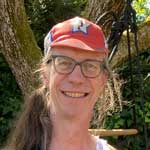 |
Mike Wagenbach (senior research scientist with Linda Wordeman) Mike is an expert biochemist with decades of experience in molecular cloning, purification of difficult protein complexes from bacterial, insect, and human cell cultures, and in development of biophysical assays to study the function of isolated proteins in vitro. In the Asbury Lab, Mike is overseeing the refurbishment of our FPLC equipment, generating new mutant gene constructs, and helping train new members to recombinantly express and purify kinetochore subcomplexes. |
 |
Seung Ryoung Jung (senior research scientist with Daniel Chiu) Seung-Ryoung studied calcium-dependent ion channels and exocytosis in epithelial and pancreatic beta cells during his Ph.D. training at POSTECH in South Korea and here at UW with Duk-Su Koh and Bertil Hille. During his postdoc, he focused on glucose-stimulated insulin secretin in pancreatic islets and gene expression related to DNA replication and microRNA using single-molecule fluorescence resonance energy transfer. He is currently a Senior Research Scientist in the laboratory of Daniel Chiu. |
FORMER MEMBERS & ASSOCIATES |
|
Katelyn Kostello Katelyn worked as an undergraduate research assistant while earning a BS in Bioengineering at UW. In the Asbury Lab, she used laser trapping to study how mechanical coupling coordinates the growth dynamics of microtubules. Katelyn's research led to co-authorship on a primary research publication, and was the basis for her selection as a Mary Gates Undergraduate Research Scholar. |
|
Yuna Liu Yuna worked as an undergraduate research assistant while earning dual degrees, a BA in Mathematics and a BS in Applied Mathematics at UW. In the Asbury Lab, she used stochastic modeling to understand how the growth of many microtubules in a bundle can be coordinated such that they behave as a single unit. Yuna's research led to co-authorship on a primary research publication. |
|
Lucy Maki-Fern Lucy worked as an undergraduate research assistant while earning a BS in Molecular, Cellular, and Developmental Biology at UW. In the Asbury Lab, she used laser trapping to study how magnesium and GTP analogs that modulate the growth and shortening dynamics of microtubules affect the stability of kinetochore-microtubule coupling. |
|
Krishna Sarangapani Krishna completed his BS in biotechnology & biochemical engineering from IIT in Kharagpur, India. In 2005, he earned his PhD working with Cheng Zhu at Georgia Tech, studying selectin-ligand bonds. He then worked in Levent Degertekin's lab, developing membrane-based force probes, before joining us in 2009. As a postdoc and later a research scientist at UW, Krishna discovered the catch bond-like behavior of yeast kinetochores, and completed many studies of kinetochore function and regulation. Since 2023, he has been a research scientist in the Sambhara lab at the CDC in Atlanta. |
|
Kim Fong Kim earned her bachelor's degree in Biology and Chemistry with a minor in Mathematical Biology from Scripps College. She earned her PhD in Biochemistry from the University of Washington working in the laboratory of Trisha Davis, where she studied several aspects of microtubule biology in yeast, including microtubule nucleation, cell cycle regulation, and centrosomal organization. In the Asbury lab, she made the first-ever measurements of mechanical strength and flexibility of microtubule attachments to the yeast spindle pole body. In 2021, she accepted a position at Adaptive Biotechnologies in Seattle. |
|
Guangyang Cai Guangyang "Andy" Cai earned his PhD in the BPSD (Biological Physics, Structure, and Design) program, working in the Asbury and Kollman labs. His research focused on refractile bodies (R-bodies), which are pH-responsive conformationally dynamic protein complexes. He generated high resolution molecular structures of R-bodies in tandem with biophysical characterization of R-body transition mechanisms. Outside of research, Andy enjoys cooking, building computers, and spending time with his wife. |
|
Daniel Barrero As an undergraduate, Daniel studied signaling pathways that drive preterm birth using murine models, and then discovered his love of structural biology and biophysics while working as a technician in the Puglisi lab at Stanford studying HIV reverse transcription. Daniel joined the Biggins lab in 2019, and was co-advised in the Asbury lab. For his PhD he used biochemical, structural, and biophysical tools to investigate how the architecture of the kinetochore allows for its unique function and regulation. In 2024, he began a postdoc in the Villa lab at UCSD. |
|
Haein Kim Haein earned her BS in Chemistry and Philosophy from Haverford College. She thenworked as a research tech at Children's Hospital of Philadelphia, studying coagulation proteins. She earned her PhD in Cellular, Molecular, and Biomedical Sciences from the University of Vermont, working in the laboratory of Jason Stumpff and studying the mechanisms that coordinate chromosome congression. In the Asbury lab, Haein used optical trapping to understand how coordinated microtubule dynamics contribute to normal chromosome movement. In 2021, Haein joined XimBio in Philadelpha as a Business Development Associate. |
|
Grace Hamilton Grace earned her bachelor’s in biology and Russian from Bates College in 2015, where she studied bacterial enzymes as potential templates for biomimetic catalysts. In 2016, Grace joined the Davis lab, where she studied the path of force transmission through sub-complexes of the yeast kinetochore. In 2021, she joined the Gladfelter lab at UNC Chapel Hill as a SPIRE postdoctoral fellow, exploring proteins that mediate cell shape plasticity in extremotolerant fungi. In 2024, Grace started her own lab at High Point University, in North Carolina. |
|
Rachel Flores Rachel was an undergraduate in Brian Livingston's lab at California State U, Long Beach, where she determined the skeletal proteomes of four echinoderms (S. spiculata, P. miniata, E. tribuloides, and A. japonica), identified essential skeletal proteins found in all echinoderms, and worked to understand their roles of in biomineralization. In 2017, she joined Trisha Davis' lab, where she studied the load-bearing interactions between the Ndc80c and Dam1c kinetochore complexes. In 2021, Rachel joined the Southworth lab at UCSF as a postdoc. |
|
Luke Helgeson Luke joined Trisha Davis' lab as a postdoc in 2017, where he worked on biochemical purification and biophysical studies of the Ska complex from human kinetochores. In 2021, he accepted a position in the Protein Engineering department at SystImmune, a Seattle-area biotechnology company. |
|
Abraham Gutierrez Abraham earned his bachelor's in Molecular, Cellular, and Developmental Biology from the University of California, Santa Cruz. He worked in Barry Bowman's lab where he studied the function of CAX-like genes, which are homologous to CAX (cation-exchange) transporters. Abe joined Sue Biggins' lab in 2015 where he studied phosphoregulation of the Dam1 complex and its role in kinetochore-microtubule coupling. In 2020 he joined Christine Suetterlin's lab at UC Irvine as a postdoc. |
 |
Emily Scarborough Emily earned her bachelor’s in Chemistry from the University of Pennsylvania in 2012. She worked as both an undergraduate researcher and a lab technician in the lab of Dr. Jim Shorter at the Perelman School of Medicine where she studied aggregation-prone proteins involved in neurodegenerative disorders such as ALS. Emily joined Trisha Davis' lab in 2014, where she investigated the interactions between sub-complexes of the kinetochore using single molecule techniques. In 2019 she joined Benjamin Prosser's lab at Penn as a postdoc. |
|
Connor King Connor hails from Kent Washington. He joined the Asbury lab in 2017 as an undergraduate student researcher. He studied Aurora B kinase's role in meiotic error correction using insect spermatocytes. Connor aspires to be a pediatrician and volunteers with the youth tutoring program in Jackson Park, Seattle. He earned his bachelor's degree in Microbiology from University of Washington in 2019 with a minor in Comparative History of Ideas. |
|
Benan Nalbant Benan is from the Bay Area. She joined the Asbury lab in 2019 while a junior at the University of Washington as an undergraduate student researcher. She earned her bachelor's degree in 2020 in Biology with a minor in Physics. She aspires to do research that falls at the intersection of biology and physics. Along with Connor, Julia, and Lyda she studied the mechanisms of error correction during meiotic chromosome segregation in insect spermatocytes. |
|
Julia Tryon While working towards a double degree, with a B.S. in Biology and a B.A. in Spanish, Julia also worked as an undergraduate student researcher in the Asbury Lab, starting at the end of her sophomore year. She studied meiotic chromosome segregation in insect spermatocytes. She aspires to attend medical school in the near future. In her free time she enjoys EDM and training her Australian Shepherd to compete in agility. |
|
Lyda Ebadani Lyda Ebadani joined the Asbury Lab as an undergraduate student researcher during her sophomore year at the University of Washington. She majored in Public Health, and hopes to concentrate in Nutritional Sciences within her degree program. Her future ambition is to attend an Allopathic Medical School to become an Obstetrician-Gynecologist. Along with Connor and Julia, Lyda studied chromosome segregation and error correction mechanisms in insect spermatocytes. |
 |
Anna de Regt Anna earned her bachelor's degree in Engineering from Swarthmore College in 2009. She then pursued graduate studies in Bob Sauer's lab at MIT, using recombinant protein biochemistry to investigate the molecular basis of protein allostery. After completing her PhD in 2014, Anna returned to her home state of Washington to work with Sue Biggins. Her project focused on the mechanism by which Aurora B senses tension across kinetochores during mitosis. In 2019 Anna began working for Seattle Genetics. |
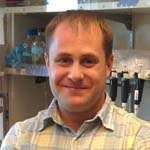 |
Matthew Miller Matt is originally from Denver, CO. He earned his bachelor's in biology from from Carleton College in 2001 and then worked at NatureWorks LLC (2001-2006). He earned his PhD in 2012 from MIT, where he worked in Angelika Amon’s lab studying meiotic cyclin-dependent kinase regulation and the consequences of misregulation. Matt joined Sue Biggins' lab in early 2013 where he investigated the mechanisms by which tension stabilizes kinetochore-microtubule attachments. In 2019 Matt started his own laboratory in the Biochemistry Department at the University of Utah. |
 |
Jeo ook Kim Jae ook earned his bachelor’s degree in Biochemistry at Colorado State University. He worked in Mark Zabel’s lab, where he helped to develop an assay to detect chronic wasting disease in wild Rocky Mountain elk. He joined Trisha Davis' lab in 2014 and studied the interactions between and the regulation of various kinetochore protein complexes. He earned his PhD in 2018 and began working for a biotechnology firm in Seoul, South Korea. |
|
Megan Bailey Megan earned her bachelor's in Chemistry and Art History from Williams College in 2008 and then worked as a research assistant at Brigham and Women’s Hospital in Jagesh Shah’s lab studying the spindle assembly checkpoint. In 2010, she joined Jennifer Ross' lab, then at U. Mass. Amherst, where she studied how katanin severs microtubules. She earned her PhD in Molecular and Cellular Biology in fall 2015 and joined the Asbury lab where she studied interactions between dynein, she1, and microtubules. In 2017, she and her family relocated to Germany, where Megan began working in the laboratory of Heinz Koeppl (TU Darmstadt). |
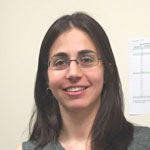 |
Aida Llauró Portell Aida is originally from Catalunya, the northeast part of Spain. She earned a degree in Physics from University of Barcelona in 2010 and a master's in Biophysics from University Autonomous of Madrid in 2011. In 2012 she started her PhD in the De Pablo lab, where she studied mechanical properties of virus-like particles with Atomic Force Microscopy. After finishing her PhD in 2016 she joined the Asbury lab to investigate microtubule dynamics and spindle pole body-microtubule interactions. In 2018 she began working for Lumicks, supplier of advanced laser trapping instruments, in Amsterdam. |
 |
Amitabha "Guppy" Gupta Guppy moved from Calcutta, India, to Colgate University where he earned his bachelor's in Molecular Biology in 2005. For his PhD he worked with Rodney Rothstein, at Columbia University, focusing on DNA damage and repair, and the effects of DNA damage on cellular nucleotide pools. After obtaining his PhD in 2012, Guppy joined Sue Biggins’ lab, where he investigated the roles of microtubule-associated proteins and motors at kinetochores. |
 |
Kwaku Opoku Kwaku is from Akuase in the Eastern Region of Ghana. He earned a dual-degree in Applied Science and Biomedical Engineering from Concordia College, Moorhead MN, and the University of Minnesota, respectively. He worked in Dave Odde's lab where he studied the effect of substrate stiffness on the shape and migration of human glioma brain cancer cells. He joined the Asbury lab in 2011 where he studied the biophysics of the kinetochore-based mitotic checkpoint. He earned his PhD in 2016 and began working as a Technology Manager at the University of Illinois, and more recently became a Technology Research Program Manager at Medtronic, in Minneapolis. |
 |
Luke Johnson Luke hails from the Vancouver Washington metropolitan area. He earned his bachelor's in Biology in 2016 from the University of Washington. During his senior year and immediately following graduation, he worked in the Asbury lab studying meiotic chromosome segregation in insect spermatocytes. In Fall 2017 he enrolled in the UW School of Medicine in Spokane WA. |
|
Yi Deng Yi earned his PhD in 2012 from Princeton, where he studied the mechanical properties of the cell walls of individual, living bacteria and developed new techniques for live-cell imaging using fluorescence and force probes. In the Asbury Lab, Yi investigated the role of mechanics in kinetochore checkpoint signaling, and studyied the architecture of the kinetochore. In 2016, Yi began working as a Scientist, Imaging Genomic Systems, at Nanostring Technologies, in Seattle. |
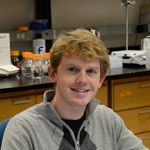 |
Erik Yusko Erik earned his bachelor’s in Biomedical Engineering from the “other UW”, the University of Wisconsin, in 2007. He then joined Michael Mayer’s group, then at the University of Michigan, where he showed that nanopore-based resistive pulse sensing can be used to measure the size, charge, shape, dipole moment, and rotational diffusion coefficient of individual proteins. He earned his PhD in 2012 and joined the Asbury lab in early 2013, where he studied the mechanical properties of centrosome-microtubule attachments and their regulation. Erik joined Adaptive Biotechnologies in 2016 as a Scientist, Computational Biologist. |
 |
Emily Mazanka Emily earned her bachelor's in Biology from Oakland University, near her hometown in southeastern Michigan. She then went on to complete her PhD in Cell Biology from Northwestern University, studying cell fate and asymmetry in the lab of Eric Weiss. She joined Trisha Davis' lab in the fall of 2010, where she worked on reconstituting protein sub-complexes of the central-outer kinetochore interface and studied their functions using single molecule techniques. In 2015, Emily began as a Clinical Genomics Research Associate at Partners Healthcare in Cambridge MA. |
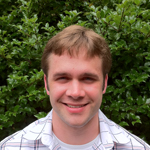 |
Jonathan Driver Jonathan is originally from Houston, TX. He earned his bachelor's in chemistry from Rice University in 2006. He then joined Rice's department of bioengineering to study the biophysics of transport by multiple microtubule motors with Michael Diehl, earning his PhD in December 2011. In late 2011 he joined the Asbury lab, where he studied kinetochore structure-function and phosphoregulation. In 2015, Jonathan enrolled in the Petroleum Engineering program at the University of Texas, Austin, one of the top programs in the country. |
 |
Jerry Tien Jerry received his bachelor's in biochemistry from the University of British Columbia where he worked in Robert Molday's lab characterizing proteins of the eye. He also worked at the BC Cancer Agency and at QLT Inc., a biopharmaceutical company based in Vancouver, BC. In 2009 he joined the Davis lab, where he studyied interactions and regulation between various kinetochore components. Jerry earned his PhD in 2014 and began a postdoc with Gregg Morin at the Genome Sciences Centre of the BC Cancer Agency. |
 |
Neil Umbreit Neil hails from southeastern Pennsylvania, and earned his bachelor's in molecular biology and chemistry from the University of Pittsburgh in 2008. As an undergraduate, he worked in Lew Jacobson's lab studying calcium-dependent signals that control muscle protein stability in C. elegans. In 2009 he joined the Davis lab, where he studied interactions between sub-complexes of the kinetochore using single molecule techniques. Neil earned his PhD in 2014 and began working with David Pellman as a postdoc. |
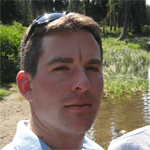 |
Andy Powers Andy is from Sonoma, CA and received his bachelor's degree in microbiology from UC Davis, where he worked with the late John Rutledge studying interactions between lipoproteins and the vascular endothelium. He joined the Asbury lab in 2005, where he studied how kinetochores sense and correct aberrant attachments to the mitotic spindle. Andy earned his PhD in 2011 and began as a postdoctoral fellow with Leon Murphy and Bryan Laffitte at the Genomics Institute of the Novartis Research Foundation in La Jolla, CA. Andy was interviewed in July 2013 for the UW School of Medicine Alumni Connection. (link) |
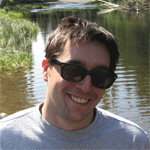 |
Andrew Franck Andrew received his bachelor's degree in physics from UC Berkeley in 2001. Prior to graduate school he worked as a technician at the Advanced Light Source synchrotron at the Lawrence Berkeley National Laboratory and on the KamLAND neutrino detector in the Berkeley Physics department. He joined the Asbury lab in 2005, where is research focused on how kinetochores couple force to microtubule tips and how force alters microtubule dynamic instability. Andrew earned his PhD in 2012 and began working with Melissa Moore and Jeff Gelles as a postdoc.
|
 |
Hugo Arellano-Santoyo Hugo earned his bachelor's in Physics from Princeton in 2009, where he also completed the Integrated Genomics program. He worked in Josh Shaevitz's lab on in vitro reconstitution of FtsZ dynamics and the contribution of MreB to cellular stiffness in E. coli. He joined the Asbury and Biggins labs in 2010 as a jointly-mentored graduate student in Molecular and Cellular Biology, initiating a biophysical study of the kinetochore-based mitotic checkpoint. In 2012 he earned his MS degree and moved to Boston, where he began working as a graduate student in David Pellman's lab. |
 |
Dan Gestaut Dan received his bachelor’s in biochemistry from Whitman College in Walla Walla WA, where he worked in the Vernon Lab studying the function of pentatricopeptide repeat proteins in plants. In 2003, he joined Trisha Davis' lab in biochemistry here at the University of Washington, where he purified and characterized many kinetochore sub-complexes. In our lab he studied these sub-complexes using single molecule techniques. Dan earned his PhD in 2011 and then began a postdoc with Judith Frydman at Stanford. |
 |
Jason Stumpff Jason received his bachelor's in biology from Eckerd College, in St. Petersburg FL, and his PhD in molecular, cellular, and developmental biology from the University of Colorado, Boulder. He joined Linda Wordeman's lab as a postdoc in 2005, investigating the mechanisms that control chromosome alignment during mitosis. In the Asbury lab, he used single molecule techniques to study how mitotic kinesins contribute to chromosome alignment. Jason now runs his own lab as an Assistant Professor of Molecular Physiology and Biophysics at the University of Vermont. (Click here to visit Jason's lab website.) |
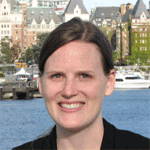 |
Anne Knowlton Anne received her bachelor’s in biology from Clemson, and her PhD in biochemistry and molecular genetics from the University of Virginia, where she studied regulation of kinesins in the mitotic spindle in Todd Stukenberg’s lab. She joined Trisha Davis’s group in 2009, where she studied the contribution of protein complexes to the end-on attachment of kinetochores to microtubules using single molecule techniques. In 2011, she accepted a position as Scientific Editor at Cell Press. |
 |
Bungo Akiyoshi Bungo worked as an undergraduate in Yoshi Watanabe's lab at the University of Tokyo, studying meiosis in fission yeast. He later enrolled in the molecular and cellular biology graduate program run jointly by the University of Washington and the Fred Hutchinson Cancer Research Center. In 2005 he joined Sue Biggins' lab, where he developed new methods to purify kinetochores. He worked in the Asbury lab to study the function of these kinetochores using single molecule techniques. Bungo earned his Ph.D. in 2010, and then joined Keith Gull's lab as a postdoc at Oxford. Beginning in September 2013, Bungo began running his own lab in the Department of Biochemistry at Oxford and recently moved to the University of Edinburgh. |
 |
Jeremy Cooper Jeremy earned his bachelor's in mechanical engineering from Gonzaga University in Spokane WA. He then joined Linda Wordeman's lab in physiology & biophysics in 2002, where he used single molecule techniques to study how the microtubule-destabilizing enzyme, MCAK, operates. This work included the design and construction of a custom total internal reflection fluorescence (TIRF) microscope in the Asbury lab. Jeremy defended his thesis in 2008, and then joined the instrument development division at Applied Precision, in Issaquah WA. |
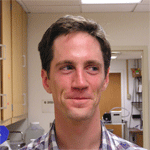 |
Ryan Lemke Ryan is a veteran of six years in the US Navy's nuclear propulsion program. He then studied biochemistry at the University of Washington, working as an undergraduate research assistant in the Asbury lab until earning his bachelor's in 2008, and then as a full-time technician. In Fall 2010, he enrolled in the Columbia University College of Dental Medicine. |
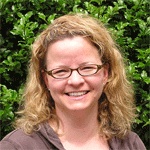 |
Carol Huseby Carol received a Washington NASA Space Grant Scholarship to attend the University of Washington in 2006. She worked in the Asbury lab from 2008 through 2010, developing computational models to investigate how chromosomes find the equator of the spindle during metaphase of the cell cycle. She earned her bachelor's degree in 2010 in Physics and Biology with a minor in Applied Math. In fall 2010, she began graduate studies in Applied Math. |
Home | Research | People | Publications | Photos | Positions | News | Links |
 |
 |